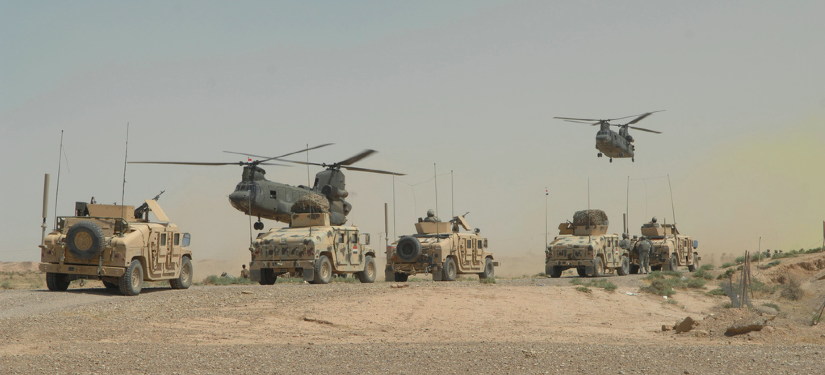For the first time in two years, Iraq is back on many Americans’ radars. The media has flashed alerts about Al Qaeda taking over cities in Anbar Province, and death tolls being at their highest since 2008. Meanwhile, the Obama Administration and Congress blame each other for the violence as they debate arms sales to the Iraqi government. Relatively ignored in the media are the real causes of the violence in Iraq: the Maliki government and the complete lack of foresight shown by the Obama Administration when it withdrew American combat forces from Iraq in 2011.
According to the UN, the levels of violence in Iraq are at their highest since 2008, and the locus of responsibility for this lies with the Maliki government. As soon as the United States withdrew, Maliki consolidated power through a number of steps, including: refusing to follow the Erbil Power Sharing Agreement; shifting the promotion structure within the Iraqi Security Forces (ISF) to gain further control over the military; consolidating power in the Executive at the cost of Parliament and the Judiciary; holding show trials of opposition figures; and suppressing protests over the failure of Baghdad to create jobs and push oil revenues to the Sunni provinces.
Maliki’s blatant power grab led many Sunnis in Anbar to fear that they would be sidelined politically by the Shia-led government. The Islamic State of Iraq and al-Sham (ISIS)—once known as Al Qaeda in Iraq and newly strengthened by the war in Syria—capitalized on Sunni fears and portrayed themselves as the protectors of the Sunni population when they seized portions of Ramadi and Fallujah. The good news is that the Anbar tribes are turning against ISIS and its local allies, just as occurred during the Sunni Awakening in 2007, since the tribes do not share ISIS’ vision of a fundamentalist state. The bad news is that Maliki’s continued disregard for Sunnis could eventually lead to a breakdown of the Iraqi state.
Although Maliki’s desire to consolidate power and ignore the Sunni minority is the proximate cause of the violence, the Obama Administration also deserves some blame. First, as Senators John McCain and Lindsey Graham recently stated, “[w]hen President Obama withdrew all U.S. forces from Iraq in 2011, over the objections of our military leaders and commanders on the ground, many of us predicted that the vacuum would be filled by America’s enemies and [Iraq] would emerge as a threat to U.S. national security interests. Sadly, that reality is now clearer than ever.”
While the President’s defenders argue that it was the Iraqi government that wanted the U.S. military out, it was or should have been clear to the President that withdrawing all U.S. combat forces—after an eight year war which eviscerated and then hastily rebuilt Iraqi civil society—would create a vacuum of governance and institutions that invited corruption and a return to sectarian violence. Nor was the President lacking leverage to push through a favorable status-of-forces agreement. The United States supplied weaponry and training to the Iraqi military, helped to recreate civil institutions, and provided funds to prop up the Iraqi economy. These leverage points could have been used to reach a sufficient status-of-forces agreement which maintained a minimal U.S. military presence in Iraq. Nevertheless, the President chose to totally withdraw U.S. forces after Iraqi pushback on American immunity,[i] and claimed that he was simply fulfilling a campaign promise by withdrawing all troops. As Senators McCain and Graham said, the President was criticized by many U.S. military and foreign policy experts for this decision in 2011, but when 75 percent of Americans supported withdrawing all troops, the President ignored the obvious need to maintain a light military presence.
The Obama Administration cannot go back in time and keep a limited number of troops in Iraq, but there are steps the Administration can take now to decrease the violence. First, the United States should supply weapons and ISR systems that enable the Iraqi military to defeat ISIS forces in Anbar. Yet conditions must be tied to these systems, including: a requirement to return to the Erbil power-sharing agreement; an agreement to end show trials and drop all charges against Sunni politicians; and a commitment to free and fair national elections in April. Second, the U.S. government should conduct outreach to disenfranchised Sunnis and Kurds, as well as members of the Iraqiyya and State of Law blocs, with promises of targeted aid to Sunni and Kurd communities if they reengage in the political process. Third, the U.S. should coordinate with the U.N. Assistance Mission for Iraq to enhance programs focused on effective, corruption free governance in Iraq.
While Prime Minister Maliki is the proximate cause of Iraq’s violence, the Obama administration also deserves blame as a contributing factor to the violence. It was easy to predict the current course of events given what the American invasion wrought on Iraqi society, yet the President chose to ignore this and dismantled the only obstacle to a Maliki power grab and return to sectarian bloodshed—the U.S. military. Looking forward, however, President Obama still has an opportunity to promote peace and stability in Iraq. He must start by reengaging with the Iraqi government and taking steps to reassure and empower Sunni and Kurd leaders.


